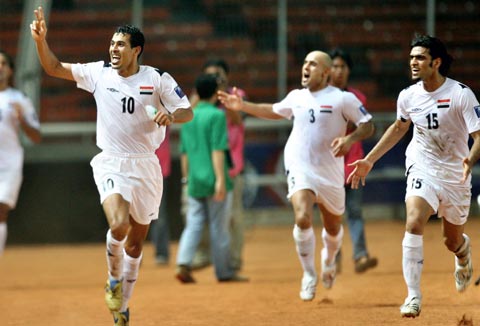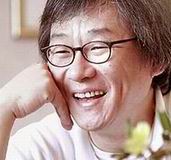原中科院的副院长陈竺刚刚调任卫生部部长,其无党籍与科研背景都颇为引人关注。在国务院调查报告认定原医疗改革失败的情况之下,新的社会医疗改革方案一直难产,新的部长能带来新的希望吗?我们还需拭目以待。
社会医疗体系在任何一个国家都是关乎最基本民生的社会支柱,因此对于任何一个负责任的政府,保证每一个公民的基本医疗福利都应当是头等大事。不久前美国导演Michael Moore又推出了一部新的纪录片《Sicko》,镜头对准的正是这一话题。他在片中极力推崇法国的社会医疗体系,那么这究竟是怎样的一套系统呢?以下是刊登在《商业周刊(
'BETTER RESULTS FOR LESS MONEY'
The French Lesson in Health Care
By Kerry Capell
The nation's system isn't quite as superb as Sicko maintains, but it's pretty good.
Michael Moore's documentarySicko trumpets France as one of the most effective providers of universal health care. His conclusions and fist-in-your-gut approach may drive some Americans up the wall. But whatever you think of Moore, the French system -- a complex mix of private and public financing -- offers valuable lessons for would-be health-care reformers in the US. In Sicko, Moore lumps France in with the socialized systems of Britain, Canada, and Cuba. In fact, the French system is similar enough to the US model that reforms based on France's experience might work in America. The French can choose their doctors and see any specialist they want. Doctors in France, many of whom are self-employed, are free to prescribe any care they deem medically necessary. "The French approach suggests it is possible to solve the problem of financing universal coverage...[without] reorganizing the entire system," says Victor G. Rodwin, professor of health policy and management at New York University.
France also demonstrates that you can deliver stellar results with this mix of public and private financing. In a recent World Health Organization health-care ranking, France came in first, while the US scored 37th, slightly better than Cuba and one notch above Slovenia. France's infant death rate is 3.9 per 1,000 live births, compared with 7 in the US, and average life expectancy is 79.4 years, two years more than in the US. The country has far more hospital beds and doctors per capita than America, and far lower rates of death from diabetes and heart disease. The difference in deaths from respiratory disease, an often preventable form of mortality, is particularly striking: 31.2 per 100,000 people in France, vs. 61.5 per 100,000 in the US.
That's not to say the French have solved all health-care riddles. Like every other nation, France is wrestling with runaway health-care inflation. That has led to some hefty tax hikes, and France is now considering US-style health-maintenance organization tactics to rein in costs. Still, some 65 percent of French citizens express satisfaction with their system, compared with 40 percent of US residents. And France spends just 10.7 percent of its gross domestic product on health care, while the US lays out 16 percent, more than any other nation. To grasp how the French system works, think about Medicare for the elderly in the US, then expand that to encompass the entire population. French medicine is based on a widely held value that the healthy should pay for care of the sick. Everyone has access to the same basic coverage through national insurance funds, to which every employer and employee contributes. The government picks up the tab for the unemployed who cannot gain coverage through a family member.
SAFETY NET
But the french system is much more generous to its entire population than the US is to its seniors. Unlike with Medicare, there are no deductibles, just modest co- payments that are dismissed for the chronically ill. Additionally, almost all French buy supplemental insurance, similar to Medigap, which reduces their out-of-pocket costs and covers extra expenses such as private hospital rooms, eyeglasses, and dental care.
In France, the sicker you get, the less you pay. Chronic diseases, such as diabetes, and critical surgeries, such as a coronary bypass, are reimbursed at 100 percent. Cancer patients are treated free of charge. Patients suffering from colon cancer, for instance, can receive Genentech Inc.'s (DNA) Avastin without charge. In the US, a patient may pay $48,000 a year.
France particularly excels in prenatal and early childhood care. Since 1945 the country has built a widespread network of thousands of health-care facilities, called Protection Maternelle et Infantile (PMI), to ensure that every mother and child in the country receives basic preventive care. Children are evaluated by a team of private-practice pediatricians, nurses, midwives, psychologists, and social workers. When parents fail to bring their children in for regular checkups, social workers are dispatched to the family home. Mothers even receive a financial incentive for attending their pre- and post-natal visits.
A typical PMI can be found in Goutte d'Or, a poor neighborhood at the foot of Montmartre that has been home for the past 20 years to a swelling population of immigrants from Africa and Southeast Asia. On Rue Cavé, a tidy modern building is given over entirely to caring for expecting mothers, infants, and young children. The place usually is bustling with kids scrambling over toys, while mothers, often immigrants in colorful headdresses and with babies strapped to their backs, talk to their doctors as part of twice-monthly evaluations.
PMI and other such programs are starting to get attention in U.S. health-care circles. "If we really want to ensure that no child is left behind, then the PMI system is a good way to do it," says Daniel J. Pedersen, president of the Buffett Early Childhood Fund. "It's based on the practical idea that high-quality investments made at the start of a child's life will pay huge dividends to both the child and society in the future."
To make all this affordable, France reimburses its doctors at a far lower rate than US physicians would accept. However, French doctors don't have to pay back their crushing student loans because medical school is paid for by the state, and malpractice insurance premiums are a tiny fraction of the $55,000 a year and up that many US doctors pay. That $55,000 equals the average yearly net income for French doctors, a third of what their American counterparts earn. Then again, the French government pays two-thirds of the social security tax for most French physicians -- a tax that's typically 40 percent of income.
Specialists who have spent at least four years practicing in a hospital are free to charge what they want, and some charge upwards of $675 for a single consultation. But American-style compensation is rare. "There is an unspoken and undefined limit to what you can charge," says Dr. Paul Benfredj, a gastroenterologist in Paris.
Many French doctors, in fact, earn more by increasing their patient load, or by prescribing more diagnostic tests and procedures -- a technique, also popular in the US, that inflates health-care costs. So far France has been able to hold down the burden on patients through a combination of price controls and increased government spending, but the latter effort has led to higher taxes for both employers and workers. In 1990, 7 percent of health-care expenditures were financed out of general revenue taxes, and the rest came from mandatory payroll taxes. By 2003, the general revenue figure had grown to 40 percent, and it's still not enough. The French national insurance system has been running constant deficits since 1985 and has ballooned to $13.5 billion. That's why France is gearing up to make changes. It already requires patients to register with a general practitioner before visiting a specialist, or else agree to a lesser reimbursement, much like many US insurance plans. But France isn't likely to make major changes to a system most citizens say they like. Why would they? Says Shanny Peer, policy director at the independent French-American Foundation: "France gets better results for less money and everyone is covered."
 在电视上看着伊拉克球员一个个红着眼睛在场上飞奔,不由得想起前些日子在电影院阴差阳错看的励志电影《重振球风》。不知为什么美国佬这么喜欢励志题材,非搞到烂大街不可,就算是山珍海味吃多了也腻人,更何况大多是远离生活的做作煽情,看多了的副作用就是把感动丢了,也越来越不相信“有志者事竟成”的口号。没想到这一回伊拉克人还真的表演了一场现实版的励志故事,自从市场化改革把咱中国足球最后的一点儿拼搏精神也彻底革掉了以后,我还以为今后的足球就只能是金钱运动了,看来我又以小人之心度君子之腹了。看来战火纷飞、朝不保夕的生活环境还真是磨练人的意志,干脆甭花冤大头钱去请教练,直接把国足发配到伊拉克集训一年算了,保证立竿见影。
在电视上看着伊拉克球员一个个红着眼睛在场上飞奔,不由得想起前些日子在电影院阴差阳错看的励志电影《重振球风》。不知为什么美国佬这么喜欢励志题材,非搞到烂大街不可,就算是山珍海味吃多了也腻人,更何况大多是远离生活的做作煽情,看多了的副作用就是把感动丢了,也越来越不相信“有志者事竟成”的口号。没想到这一回伊拉克人还真的表演了一场现实版的励志故事,自从市场化改革把咱中国足球最后的一点儿拼搏精神也彻底革掉了以后,我还以为今后的足球就只能是金钱运动了,看来我又以小人之心度君子之腹了。看来战火纷飞、朝不保夕的生活环境还真是磨练人的意志,干脆甭花冤大头钱去请教练,直接把国足发配到伊拉克集训一年算了,保证立竿见影。


